
Narrow the possibilities as you work out a design. Are you going for plain or with borders, faux stone, a checkerboard, or perhaps the look of a rug? The design for a kitchen will be different from one going under a dining-room table or a hallway. Which techniques do you prefer: striping, marbling, stenciling through a template, 3D trompe l’oeil, or even freehand painting? Work out the size of elements and repeats, eventually drawing the design to scale. Pick specific motifs first, and then select the color palette.
STEP-BY-STEP
STEP 1
Prep the floor. For the wood floor shown in this sequence, that would mean stripping it of wax if necessary, doing repairs, filling large cracks, cleaning, and caulking.
Assuming the floor is sound, go on to power-sand the wood. Then sponge-wash the floor with a degreaser such as Spic and Span or TSP; dry with absorbent towels and let the floor air-dry thoroughly. Next, use a primer if you have concerns about adhesion, or to lay down a dark undercoat for a deep-tone finish color.
STEP 2
If the ground (base) coat is not wall to wall, use painter's blue tape and a measuring tool or chalkline to mark the area; your design may have more than one ground color. Use a roller for efficiency, then immediately brush out the wet paint for a traditional finish.
この記事は Old House Journal の January - February 2022 版に掲載されています。
7 日間の Magzter GOLD 無料トライアルを開始して、何千もの厳選されたプレミアム ストーリー、9,000 以上の雑誌や新聞にアクセスしてください。
すでに購読者です ? サインイン
この記事は Old House Journal の January - February 2022 版に掲載されています。
7 日間の Magzter GOLD 無料トライアルを開始して、何千もの厳選されたプレミアム ストーリー、9,000 以上の雑誌や新聞にアクセスしてください。
すでに購読者です? サインイン

Navigating the Lumberyard - Here's some lumber lingo you should know before you venture into a lumberyard.
Here's some lumber lingo you should know before you venture into a lumberyard. Almost everyone fixing an old house will end up at a lumberyard-whether it's a local supplier or the organized aisles of a big-box home-improvement store.
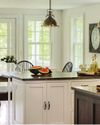
a farmhouse renewed
Sensitive renovations and restoration work preserved a house that dates to 1799.
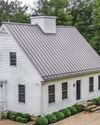
AN OVERVIEW OF METAL ROOFING
METAL ROOFS ARE RESURGENT, FOR GOOD REASONS.
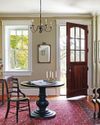
ENDURING BEAUTY IN WALLS of STONE
Now back in the family who had been here since 1830, the old farmhouse is again ready for generations to come. Additions dating to 1840 and the 1950s were preserved.

ARCHITECTURAL DETAILS COME TO LIFE
Owners and their designer celebrate the unique features of a 1912 Arts & Crafts Tudor.
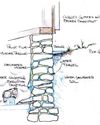
For a Wet Basement Wall
If there's problem common to old houses, it's a wet basement. I'm not talking about occasional flooding, but rather a basement that apparently seeps or leaks after even a rain shower or during snowmelt. Several approaches are available; sustainable solutions will get to the root of the problem.
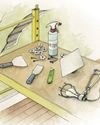
Patching a Plaster Wall
Fix a hole in the wall with a few common tools and some drywall supplies. Practice your technique!
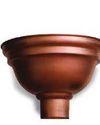
Roofing & Siding
Make note of these historical and unusual materials for the building envelope.

The Riddle of the water
When water incursion happens, the roof isn't necessarily the culprit. Maybe snaking a drain line, or clearing debris from a clogged gutter, temporarily will stem a leak. But a recurring problem usually means other forces are at work. It takes persistence-and a team with the right skills and patience—to identify the source and apply a solution.
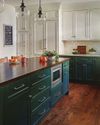
Light-filled Craftsman Redo
For a dark kitchen in a 1914 Illinois house, the trick was anchoring white expanses with woodsy warmth.